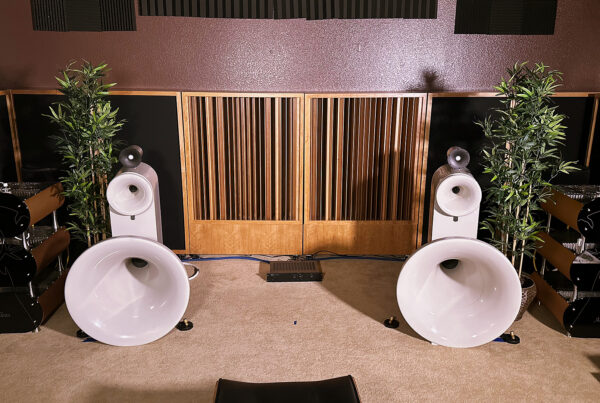Acoustic Design Project
ACS Hall
The issue is always reverberation. Reverberation is defined as how long a sound stays around within a room. It's 50 people in the room. They produce one set of limited frequency energies. We will have a band four times a year. A band produces large amounts of full range energy This produces two large extremes of energy into the room. We will design for the average usage. The treatment type, the treatment amount, and the treatment positioning depends on the frequency range and the strength or amplitude of that energy.
Treating high reveration times is a step by step process. First, you calculate the room reverb time without having to take a physical measurement by “shooting” the room. You fire a response into the room that is predictable and consistent in form and structure. You measure how long the sound stays around within the room. You measure the decay rate and level of the response. This approach requires a computer along with an amplifier / speaker that can output 100 dB SPL energy. It’s time consuming and expensive and not really necessary. You can calculate within an acceptable margin of error the Rt-30/60 times by looking at certain variables. You look at the usage of the room first.
This will tell you a range of reverb times that have been used and are widely acceptable as good start time ranges. Once you know the intended or actual usage along with the number of sound sources within the room and the room dimensions you are ready to run your first set of numbers. Your goal with the first phase of the reverberation process is to treat the available surface areas first to establish a baseline to measure from. Remember it is all about the square footage of coverages on each surface area. When you treat during a phase one, you are using the space that is the most available and then working your way through the process by then filling in the other spaces.

Process for Treating Acoustics in Large Venues
The Rt30/60 goal was 1.5 seconds full range for this venue. We had 50 sources of energy within the room at any one time. Each person (source) was the electronic equivalent of a 2 ” driver or speaker. Each person is also the equivalent of 12 sq. ft. of 1/2″ carpet with a 1/2″ pad. So we have a very unique issue here. We have a source that is generating energy and also absorbing energy. The absorption side of this novelty will assist us with absorption on the floor surface area. The speaking will produce energy that will produce the process of reverberation on each wall, floor, and ceiling surface areas. The design goal is to always work with the four walls for treatment and save the ceiling for last if needed. Most reverberation issues can be treated by using just the four walls.
Anything in acoustical treatment is a step by step process. You are usually dealing with large surface areas to treat and no budget to treat them with. To assist with the cost, we have a DIY program where we do the design work, send you our absorption technology and you do the product build along with the installation per our instructions and guidance. Treating a larger venue is all about the size of the room, the amount of energy from all sources, and the material composition of the walls, floor, and ceiling. To add to the complexity, each surface area has a different frequency and amplitude of issue which will require a different treatment approach. Some walls may require a 4″ deep panel, some may need a 6″ and some an 8″ deep panel. It all depends on the energy frequency and amplitude that is creating the issue.

Do you want to solve your room acoustic problems?
There’s no one size fits all when it comes to room acoustics.
Get your FREE personal room acoustics analysis by chief acoustics engineer Dennis Foley.








